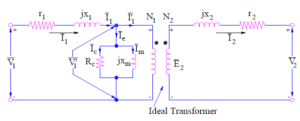Average power of SSB telephony used 80 year old research by (Holbrook and Dixon 1939) to come up with a ratio of peak voltage to RMS voltage of a voice waveform, and from that derive the ratio PEP/Pav..
(Holbrook and Dixon 1939) explored the subject measuring the voice characteristics of many talkers (as there is variation amongst talkers) to come up with an average characteristic.
Whilst in its day, obtaining instantaneous samples of voice was a challenge, it is trivial today and if you can’t believe the numbers given, try your own experiment (but realise it is for your own voice rather than the general population).
Many modern PC sound applications are capable of the measurement, I will demonstrate it with the feed Windows application Audacity with the stats.ny addin.
Above is a screenshot of a 6s recording of my voice made without stopping for breath. The statistics window shows a peak of -8.9dBFS and RMS of -27.4dBFS, giving a peak voltage to RMS voltage ratio of 18.5dB. Continue reading Average power of SSB telephony – experimental verification





